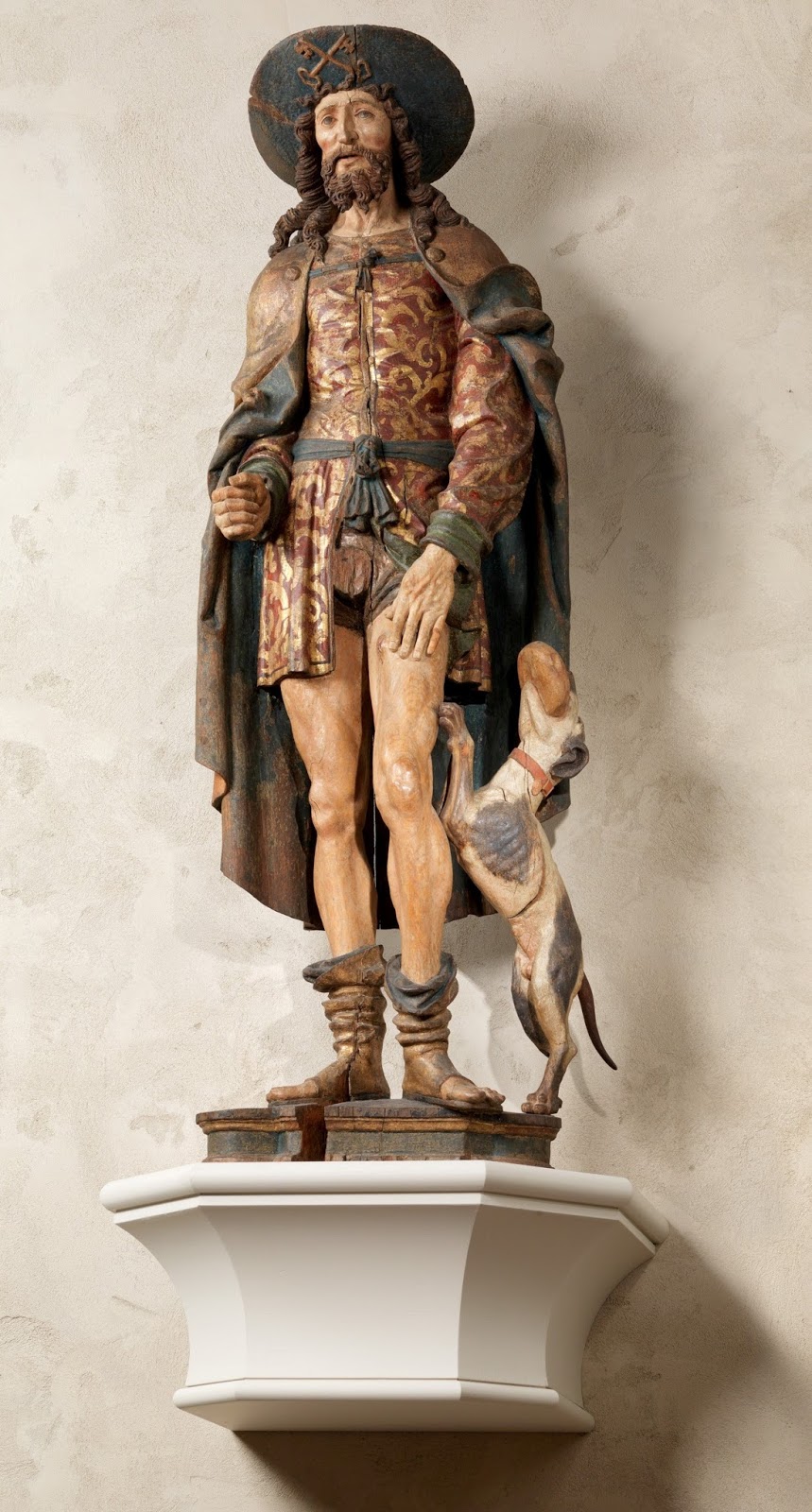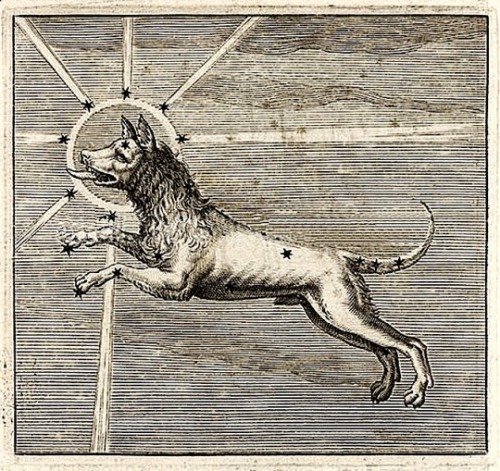
A statue of St Roch made in Normandy in the early 16th century. His pilgrim’s hat is adorned with the keys of St Peter, indicating Rome as his destination. The dog which brought him food is traditionally shown at his side.
Where is St. Roch when we need him?! The summer has been especially sweltering this week in New York. The combination of heat and humidity has made it officially feel like 100+ on several days. Whew!
St. Roch, the patron of dogs, is celebrated on August 16 during the last period of the sultry Dog Days of summer. (Disease–such as plague–was thought to be especially likely to spread during the hot Dog Days so his association with both dogs and illness contributes to his association with the Dog Days of summer.) He lived from AD 1295-1327 and is invoked against the plague as well as being considered the patron saint of dogs, falsely accused people, and bachelors.
When he was 20 years old, Roch’s parents died. He distributed all his worldly goods among the poor (like Francis of Assisi) and set out as a pilgrim for Rome. Coming into Italy during an epidemic of plague, he was very diligent in tending the sick in the public hospitals and is said to have effected many miraculous cures by prayer and the sign of the cross and the touch of his hand. He himself finally fell ill. He withdrew into the forest, where he made himself a hut of boughs and leaves, which was miraculously supplied with water by a spring that arose in the place; he would have perished had not a dog supplied him with bread and licked his wounds, healing them.
St. Roch is usually portrayed with the dog licking his plague-wounds. Plague-related images of St. Roch often include the most popular symbols of plague: swords, darts, and arrows. There was also a prevalence of memento mori images, such as dark clouds and comets, which were often referenced by physicians and writers of plague tracts as causes of plague. The physical symptoms of plague–a raised arm, a tilted head, or a collapsed body–began to symbolize plague in post-Black Death painting as well.
Plague saints offered hope and healing before, during, and after times of plague. A specific style of painting, the plague votive, was considered a talisman for warding off plague. It portrayed St. Roch or another saint as an intercessor between God and the person or persons who commissioned the painting–usually a town, government, lay confraternity, or religious order to atone for the “collective guilt” of the community. Rather than a society depressed and resigned to repeated epidemics, these votives represent people taking positive steps to regain control over their environment. Paintings of St. Roch represent the confidence in which renaissance worshipers sought to access supernatural aid in overcoming the ravages of plague.


